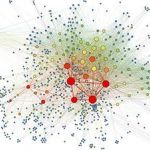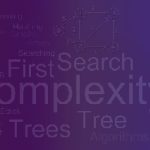
Intro to Algorithms
Summary
Ever played the Kevin Bacon game? This class will show you how it works by giving you an introduction to the design and analysis of algorithms, enabling you to discover how individuals are connected.
Expected Learning
By the end of this class you will understand key concepts needed to devise new algorithms for graphs and other important data structures and to evaluate the efficiency of these algorithms.
Syllabus
Lesson 1: A Social Network Magic Trick
Objective: Become familiar with Algorithm Analysis.
- Eulerian Path
- Correctness of Naïve
- Russian Peasants Algorithm
- Measuring Time
- Steps for Naive, Steps for Russian
- Divide and Conquer
Lesson 2: Growth Rates in Social Networks
Objective: Use mathematical tools to analyze how things are connected.
- Chain, Ring and Grid Networks
- Big Theta
- Planar Graphs
- Nodes, Edges, Regions
- Growth Rate of Edges in Planar Graph
- Hypercube
- Randomly Generated Graphs
- N Squared
- Tangled Hypercube
Lesson 3: Basic Graph Algorithms
Objective: Find the quickest route to Kevin Bacon.
- Properties of Social Networks
- Clustering Coefficient
- Connected Components
- Running Time of Connected Components
- Checking Pairwise Connectivity
- Pairwise Shortest Path
- Depth vs. Breadth First Search
- Recursion Replacement
- Marvel "Social" Network
- Finding Bridge Edges
Lesson 4: It’s Who You Know
Objective: Learn to keep track of your Best Friends using heaps.
- Degree Centrality
- Top K Via Partitioning
- Three Partitioning Cases
- Properties of a Heap
- Patch Up a Heap
- Down Heapify
- Heap Sort
Lesson 5: Strong and Weak Bonds
Objective: Work with Social Networks that have edge weights.
- Make a Tree
- Strength of Connections
- Weighted Social Networks
- How to Find the Shortest Path
- Dijkstra’s Shortest Path Algorithm
- Floyd-Warshall Intro
- Randomizing Clustering Coefficient
- Bounds on the Estimate
Lesson 6: Hardness of Network Problems
Objective: Explore what it means for a Social Network problem to be
"harder" than other.
- Tetristan
- Exponential Running Time
- Degrees of Hardness
- Reduction: Long and Simple Path
- Polynomial Time Decidable Problems
- Non-deterministic Polynomial Time Decidable Problem
- Clique Problem in NP
- Find the Strangers
- Graph Coloring is NP-Complete
Lesson 7: Review and Application
Interview with Peter Winker (Professor, Dartmouth College) on Names and Boxes Problem && Puzzles and Algorithms
Interview with Tina Eliassi-Rad (Professor, Rutgers University) on
Statistical Measures in Network && Social Networks in Security and ProtestsInterview with Andrew Goldberg (Principal Researcher, Microsoft Research) on Practical Algorithms
Interview with Vukosi Marivate (Graduate Student, Rutgers University) on Social Algorithms
Interview with Duncan Watts (Principal Researcher, Microsoft) on Pathway That Can Use Two Nodes
Intro to Graph Search Animation
Required Knowledge
This class assumes an understanding of programming at the level of CS101, including the ability to read and write short programs in Python; it also assumes a comfort level with mathematical notation at the level of high school Algebra II or the SATs.
Free
Intermediate
17 weeks
Michael Littman
Coursearena





